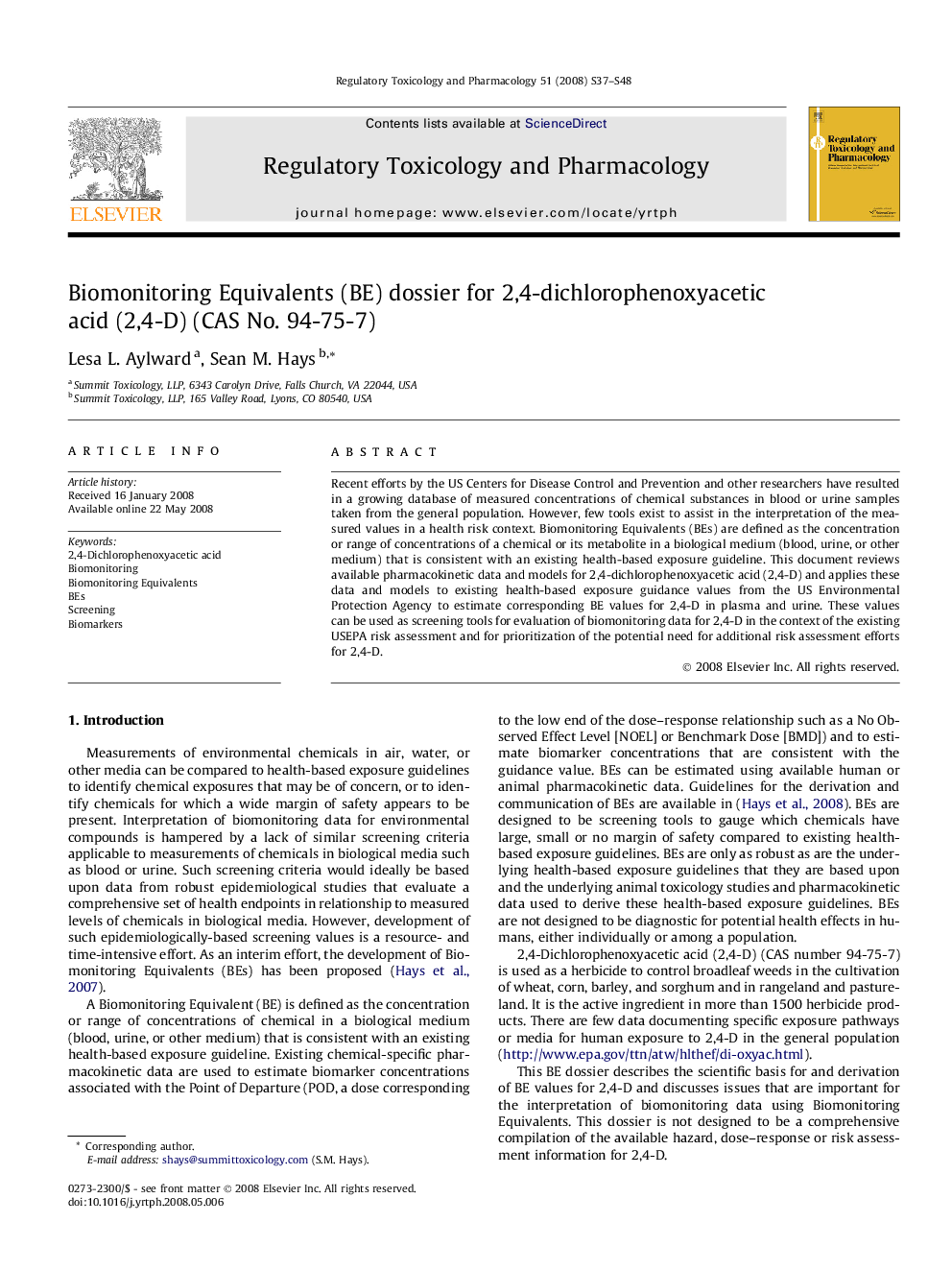| Article ID | Journal | Published Year | Pages | File Type |
|---|---|---|---|---|
| 2592931 | Regulatory Toxicology and Pharmacology | 2008 | 12 Pages |
Recent efforts by the US Centers for Disease Control and Prevention and other researchers have resulted in a growing database of measured concentrations of chemical substances in blood or urine samples taken from the general population. However, few tools exist to assist in the interpretation of the measured values in a health risk context. Biomonitoring Equivalents (BEs) are defined as the concentration or range of concentrations of a chemical or its metabolite in a biological medium (blood, urine, or other medium) that is consistent with an existing health-based exposure guideline. This document reviews available pharmacokinetic data and models for 2,4-dichlorophenoxyacetic acid (2,4-D) and applies these data and models to existing health-based exposure guidance values from the US Environmental Protection Agency to estimate corresponding BE values for 2,4-D in plasma and urine. These values can be used as screening tools for evaluation of biomonitoring data for 2,4-D in the context of the existing USEPA risk assessment and for prioritization of the potential need for additional risk assessment efforts for 2,4-D.
